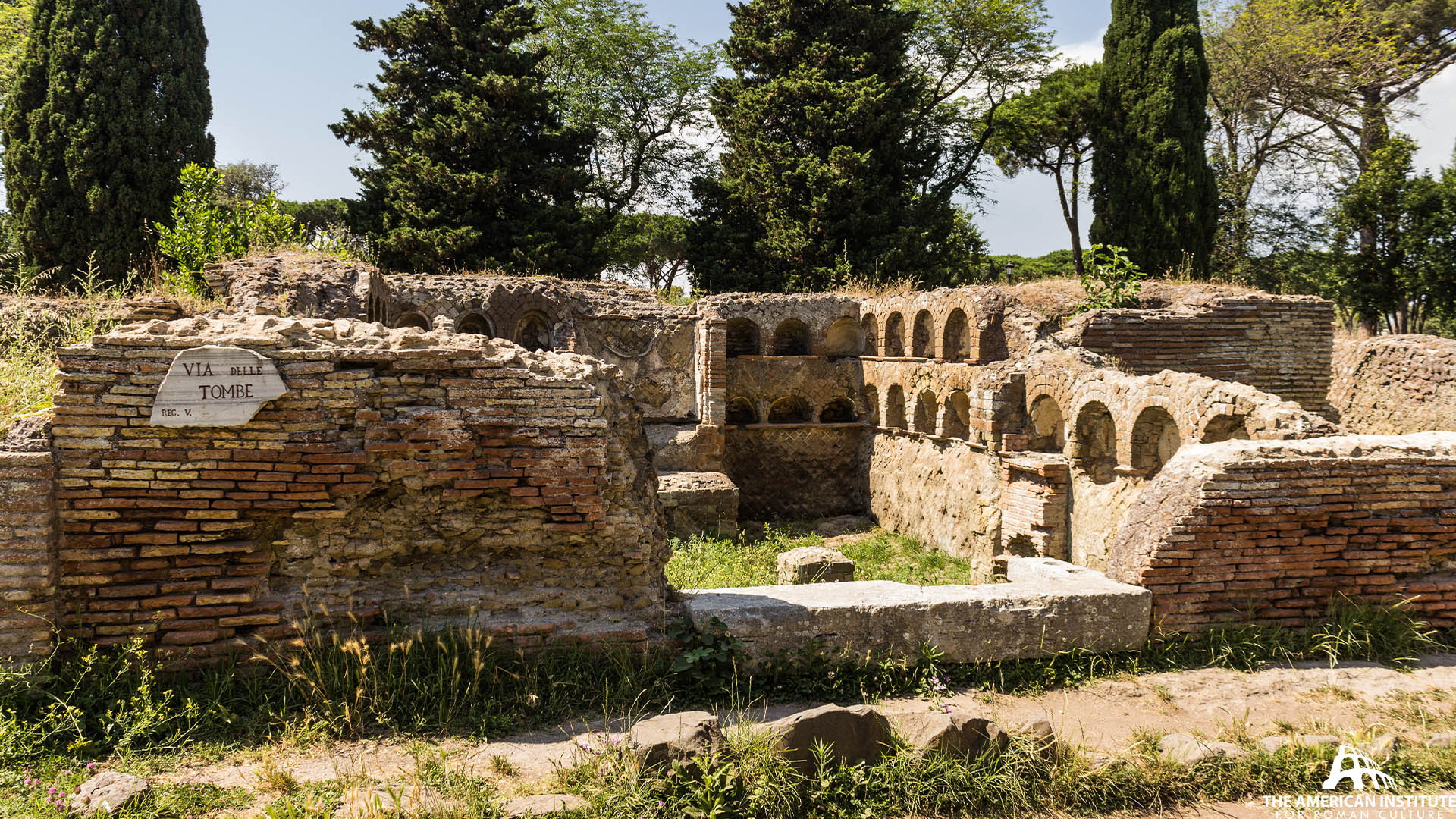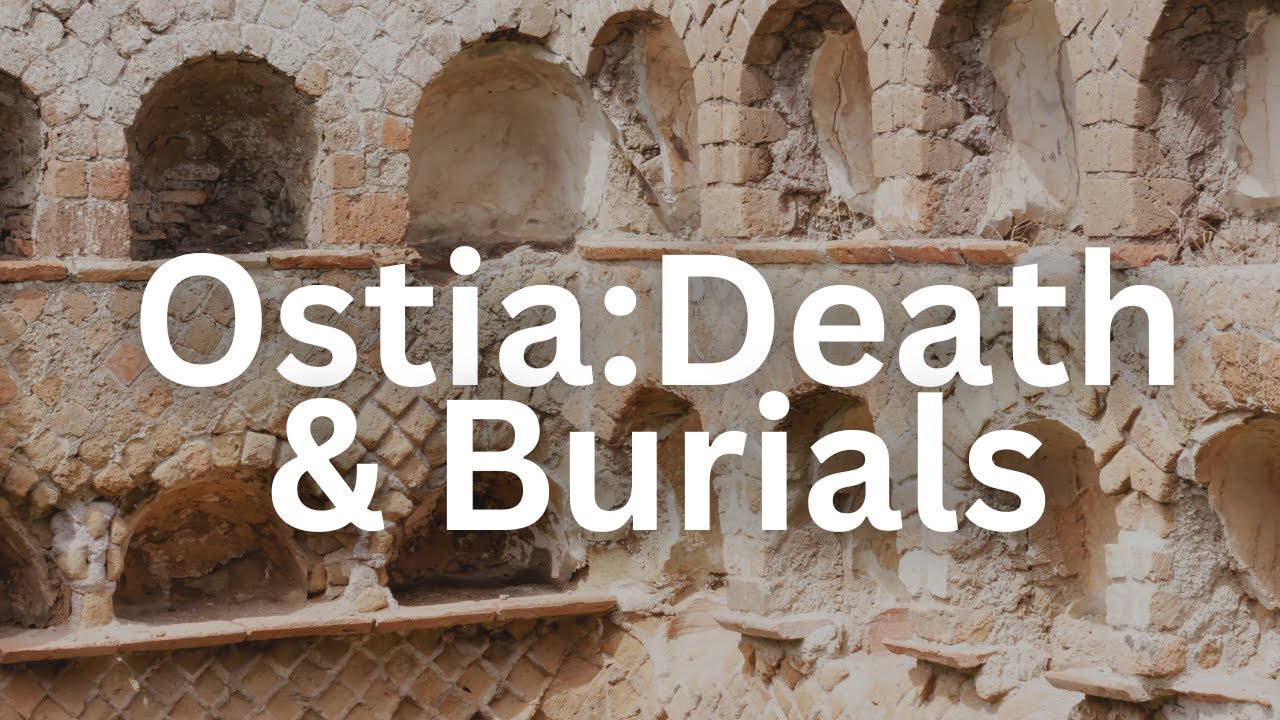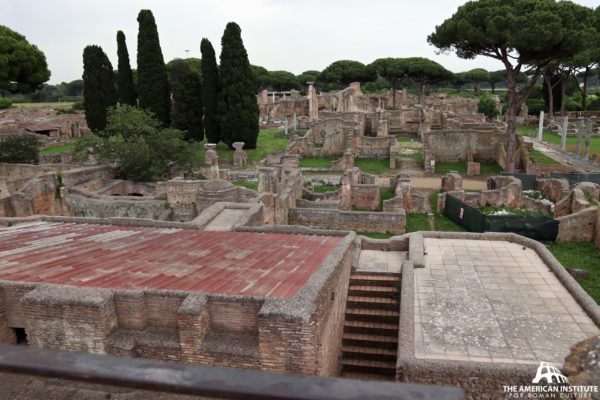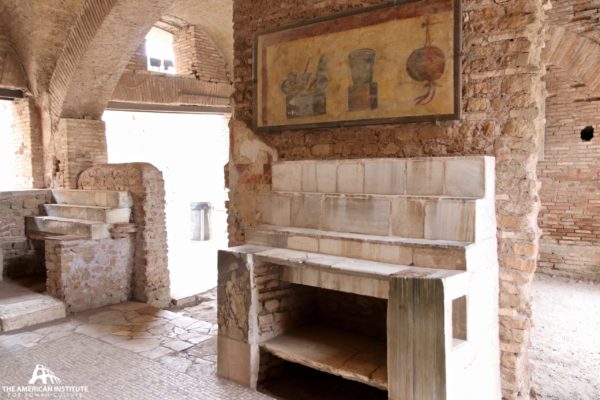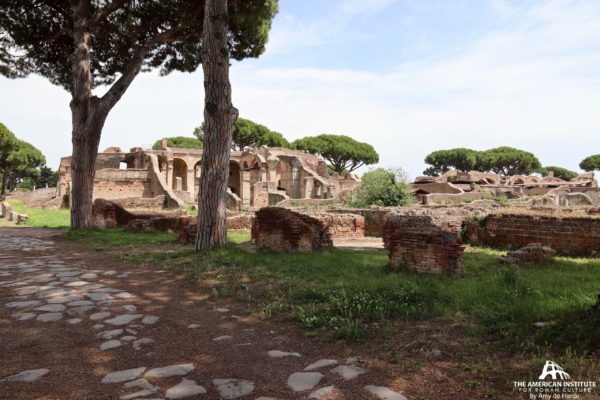Watch our video overview:
Death was an essential part of life in Ancient Rome. Honoring the memory of the deceased was fundamental for the well-being and prosperity of the families and future generations. This can be seen through the meticulous steps that followed the death: the funeral, burial, and offerings. The customs surrounding death and burial were similar in every Roman city around the territory.
First and foremost, the dead could only be buried outside the city walls or far from the inhabited center. This rule existed due to sanitary and safety reasons. Cremations and funeral pyres were common practices, and fires were dangerous if they got out of control. However, cremations were not the only funerary method. Inhumation was also common, especially during the earlier centuries. Pagan burials were realized in cemeteries on the outskirts of the city, or in underground catacombs for Christian citizens. It was part of the burial ritual to engrave religious symbols and the name of the deceased on their tomb, not only to mark their place of eternal rest but also to ensure they had a good journey to the afterlife.
The ashes of the bodies that were cremated were kept in jars or urns, which were then placed in the columbaria. The columbaria consisted of one or more rooms, sometimes within the cemetery and sometimes independent buildings. The walls of the columbaria were sectioned into many individual niches that housed the urns. When the population of Rome grew bigger, around the Augustan age during the 1st century BC, the use of cremation and columbaria tombs became more common because they were more practical and required less space than inhumations.
Around the 2nd and 3rd century AD, inhumation burial became popular again, with the rise of the use of sarcophagi. The sarcophagus was similar to a coffin, a rectangular box that could be big enough to house 2 or 3 bodies. Rich individuals commissioned very sophisticated sarcophagi for themselves and their families, made out of marble and with intrinsic religious engravings, like the sarcophagus of Junius Basus, for example. The less fortunate people were buried in wood or terracotta sarcophagi. For prominent people, like highly ranked aristocrats and the family members of the Emperors, the senate would allow them to be buried inside the city to show their eternal status.
In Ostia Antica, there were at least 2 burial places: The Port Necropolis, and the Necropolis of Via Laurentina. The Port Necropolis was composed of around 200 funerary buildings, tombs commissioned by important individuals and decorated with mosaics, while the poor people were buried in caskets in the open spaces between 2 buildings. In the Laurentina Necropolis, there were many columbaria tombs, some beautifully decorated with frescoes and stuccos.
References
- Hope, V. (2007). Death in Ancient Rome: A Sourcebook (1st ed.). Routledge. https://doi.org/10.4324/9780203392485
- https://www.ostiaantica.beniculturali.it/it/aree-archeologiche-e-monumentali/necropoli-di-porto/
- https://www.ostiaantica.beniculturali.it/it/aree-archeologiche-e-monumentali/ostia-antica/la-necropoli-laurentina/
Explore further:
This content is brought to you by The American Institute for Roman Culture, a 501(C)3 US Non-Profit Organization.
Please support our mission to aid learning and understanding of ancient Rome through free-to-access content by donating today.
Cite This Page
Cite this page as: Darius Arya, The American Institute for Roman Culture, “Ostia, Italy (Ostia Antica) – Chapter 8: Death and Burial” Ancient Rome Live. Last modified 08/28/2020. https://ancientromelive.org/ostia-italy-ostia-antica-chapter-8-death-and-burial/
License
Created by The American Institute of Roman Culture, published on 08/28/2020 under the following license: Creative Commons: Attribution-NonCommercial-ShareAlike. This license lets others remix, tweak, and build upon this content non-commercially, as long as they credit the author and license their new creations under the identical terms. Please note that content linked from this page may have different licensing terms.

